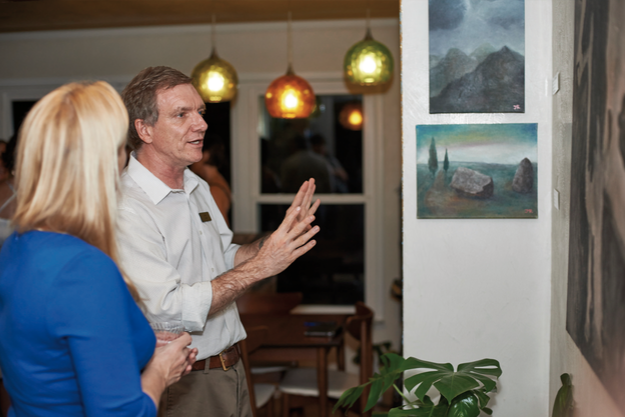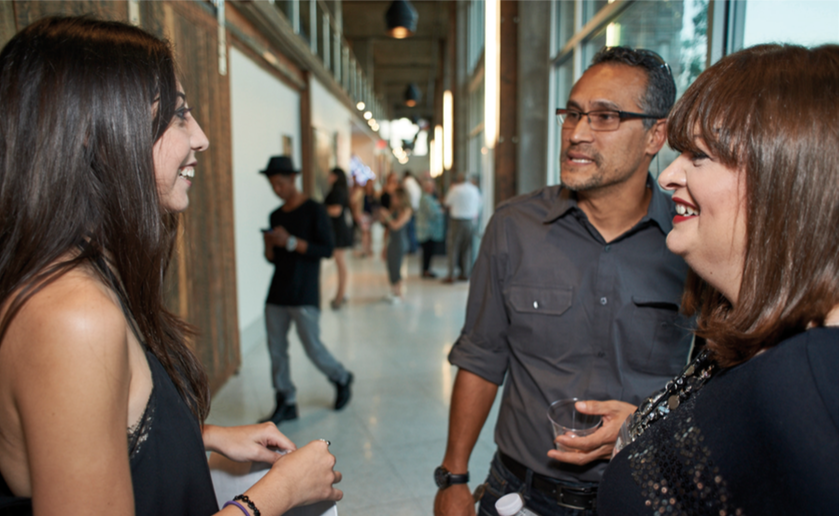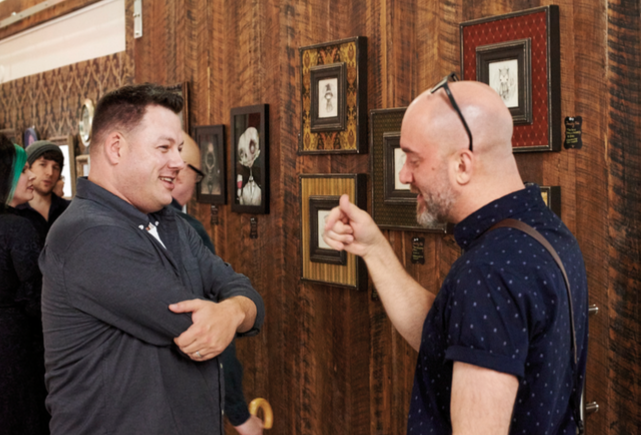Art galleries in residential buildings are nothing new. For years, art has been a requirement—some may say a necessity—in apartment buildings, specifically in residential lobby areas. Places like Boston, New York City, and Miami have unsurprisingly caught on to the trend, and now Orlando has its own set of residential galleries. Originally a sawmill in the old Mills–Nebraska lumberyard, The Art Gallery at Mills Park is one of them.
The Daily City called it a “gallobbery,” a gallery/lobby hybrid. Some simply call it the Mills gallery, some don’t think much of it, and some see it as an extension of places like CityArts Factory, where local artists can get a chance to show their work in the heart of downtown Orlando. That’s why the gallery differs from its counterparts; it’s trying to wedge its place within the Orlando arts community as more than just a glorified lobby area for yuppie residents.
Since its opening on January 29, 2016 with Florida artists Martha Lent and Peter Scarborough, the gallery has been a consistent venue for local artists like Debra Yates and Roberto Gonzalez. Over the summer, the gallery conducted a call to artists show (which it will now hold annually) to give artists the opportunity to submit their work to a panel of judges. Some artists showed their work for the first time, some were in the art scene for years. Both benefitted from exposure.
When it comes to showcasing artists, the gallery prioritizes its gender-equal philosophy, which is to always feature male and female artists in conjunction with each other. It was director Lael DeWahl’s idea to create the balance between the two since it’s harder for women to hold independent shows; they’re often underrepresented and undersold.
But it’s the space itself that attracts spectators. Two stories of natural lighting from large-scale windows flaunt the artwork, and the wooden elements throughout the space are originally from the sawmill, adding a warm touch to an otherwise minimalist space. The saturation of colors and imagery from the art sparks the interest of passers-by, leading gallery employees to give impromptu tours to interested buyers. The building even integrated a kiosk area in the lobby for prospective residents who are initially attracted to the area’s ambience.
In that sense, the gallery is successful. However, measuring the space’s success within the arts community is trickier. It’s difficult to gauge which pieces are bigger sellers to certain audiences, and it quickly becomes a question of aesthetics and personal taste. The gallery’s dual role could be a gift and a hindrance when it has to consider its position as a business. How do you choose art that is appealing and innovative at the same time—something that’s all at once daring, distinctive, and palatable?
Sometimes the art is safe and sometimes clients are drawn to the message behind the piece. Needless to say, the former outweighs the latter. The gallery’s curator, Boris Douglas Garbe, is interested in educating people about stories behind the art, not just selling pieces to potential buyers. “There are people who love the story and think ‘I want a political statement in my house,’ but there are also people who want pretty flowers because it’s going to look great with their leather couch,” Garbe said. “And some paintings are just about flowers, but some paintings are about why the vase is cracked.”
The current show, La Diaspora, veers from the mostly abstract and modernist pieces visitors were used to: “In many ways, the story La Diaspora tells, which is pretty radical, will help people understand what Puerto Rican identity is—it isn’t just a place you go to for vacations,” said Garbe. “There is a lot of pain, a lot of anger; a lot of resentment and injustice in these pieces.”
Garbe leads with an honesty and earnestness that seems to soften the politically charged material for those looking for “paintings about flowers.” Like many residential gallery curators, he doesn’t have a formal arts education background, but his work with four local curators in the past year and experience as a teacher impressed DeWahl, who owned and operated galleries in the Orlando and Winter Park area before turning to Mills Park.
The pair’s a good match. Between DeWahl’s expertise and Garbe’s openness, the gallery is able to maintain an anti-elitist attitude. Garbe noted the issues in coming off as too elitist, especially inside a residential area (arms crossed, he mocked the standoffish, often condescending “May I help you?” pose that sends visitors running). Perhaps a gallery within an apartment building is brilliant because it’s that much more inviting. The space is open, the staff friendly; there’s a resident Dachshund by the name of Lump who snoozes on the sleek furniture. It’s more diplomatic and cozy, sure, but can it cure a fundamental issue within the Orlando art community: the inclusive bug that often fails to prioritize good art over bad art?
It’s pivotal we begin to consider if galleries like The Art Gallery at Mills Park will develop into a permanent fixture amidst the local art scene. The city is booming with countless development projects, and with that comes an expansion of arts programs, venues, and artists themselves. Can a “gallobbery” grow with it?
photos by Jason Fronczek
The Art Gallery at Mills Park is located at 1650 N. Mills Ave, Orlando Fl. 32803
You can see more at: TheGalleryAtMillsPark.com



